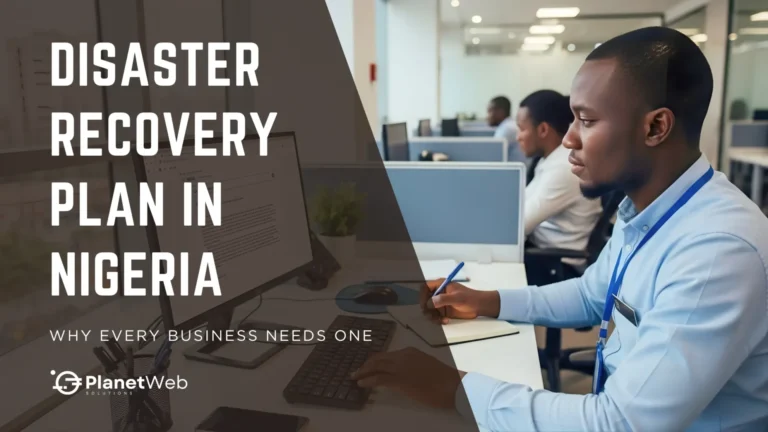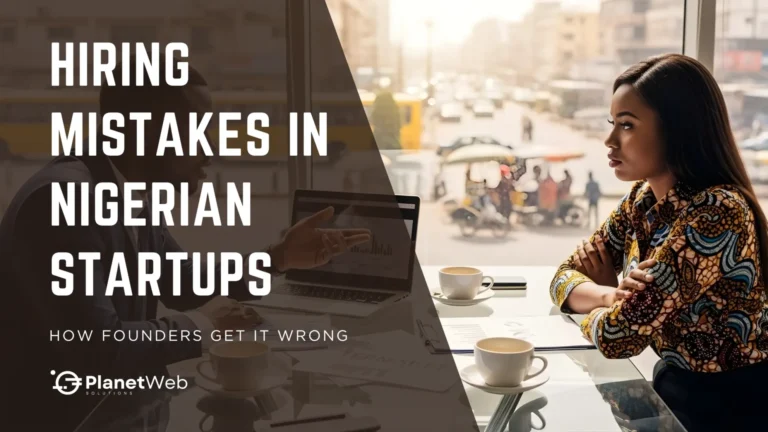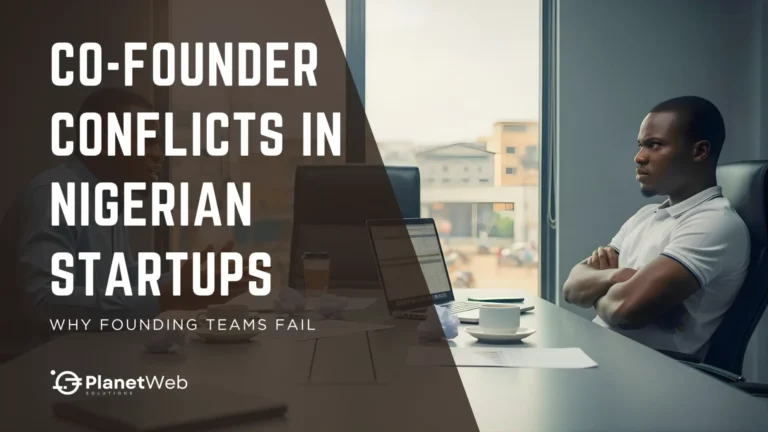Common Startup Mistakes in Nigeria and How to Avoid Them
Startup mistakes in Nigeria can derail even the best ideas. Some models look great on paper but collapse quickly under real-world pressure. Here’s what to avoid and what to build instead.
Introduction: The Scale Trap—When Ambition Becomes a Liability
Nigerian startup funding fell 46% in 2025, dropping from $332 million in 2024 to $163 million through September. That same year, Nigeria recorded 5 out of 6 African startup shutdowns. Dozens of companies quietly closed their doors, and thousands of tech workers left for Dubai, Canada, and the UK.
Yet despite this brutal correction, many founders are still launching the same broken business models that failed last year.
These aren’t just bad ideas. They’re mistakes disguised as ambition—business models that require massive scale to work, built in a market where reaching that scale is extraordinarily expensive and often impossible. We call this the Scale Trap, and it’s claiming startups faster than any other strategic error.
In Nigeria’s ecosystem, where infrastructure is unreliable, purchasing power is limited, and regulatory frameworks are still maturing, certain startup models burn through runway at an accelerated pace, leaving nothing behind but cautionary tales and exhausted teams.
This article breaks down 7 startup mistakes in Nigeria that sound smart in pitch decks but rarely survive market realities. Understanding these patterns could save you 12 to 18 months of wasted effort and hundreds of thousands in burned capital.
If you want to know what actually works instead of just what to avoid, read our companion piece: Best Startup Ideas in Nigeria: 7 Patterns Behind What’s Actually Working.
Before you continue, you might also like:
- Why Startups Fail in Nigeria: Lessons from 2024’s Closures
- 5 Make-or-Break Nigerian Startup Questions to Answer Before You Launch
Mistake 1: Ad-Supported Platforms—Why Nigerian Eyeballs Don’t Pay the Bills
Why founders fall for this: The ad model looks elegant. Build something people love, rack up views, and let advertisers foot the bill. It’s how Google and Meta built empires, so why wouldn’t it work here?
The brutal reality: Average CPM in Nigeria ranges between $0.10 and $0.50, compared to $3 to $5 in the US. At $0.20 CPM, you need 5 million impressions to generate $1,000 monthly. That’s before factoring in ad blockers, low click-through rates, and expensive data that makes users avoid ad-heavy content.
The real killer: your revenue trickles in naira while infrastructure costs arrive in dollars. Running a content platform for 100,000 users can cost hundreds of dollars monthly on AWS. African entertainment and media funding collapsed from $59.8 million in 2022 to just $1.5 million in 2024—a 97.5% drop.
What works better: Blend ads with direct monetization from day one. TechCabal combines sponsored posts with events, newsletters, and subscriptions. Or skip ads entirely for freemium, B2B SaaS, or transactional models where you control pricing.
👉 Full deep dive: Why Ad-Supported Startups in Nigeria Fail: The Harsh Economics Behind Free Apps
Mistake 2: The GMV Trap—Why Taking a Small Cut Isn’t Sustainable
Why founders fall for this: GMV (Gross Merchandise Value) looks impressive in pitch decks. “We processed ₦5 billion last quarter” sounds like traction. Some fintechs figure that at scale, tiny percentages add up to big money. It’s the Stripe playbook.
The brutal reality: You process ₦1 billion monthly at 1.5% commission. That’s ₦15 million in gross revenue. Now subtract interchange fees (40-60%), fraud and chargebacks (5-15%), KYC costs, infrastructure, and customer acquisition. That ₦15 million becomes ₦3-5 million—before salaries or rent.
Nigerian fintech funding fell 17.1% in 2024, while funded ventures dropped 68.5%. Even Paystack and Flutterwave had to expand beyond Nigeria because local margins alone couldn’t sustain growth.
What works better: Use payments as the foundation, not the business model. Layer higher-margin services: lending (Moniepoint Capital), SaaS for businesses (Cleva), embedded finance, or cross-border flows. Kippa offers inventory management and bookkeeping. Lendsqr provides lending infrastructure as a service.
👉 This deserves its own article: Fintech Business Model in Nigeria: Why GMV-Driven Startups Struggle
Mistake 3: Inventing a New Category—Visionary, But Costly
Why founders fall for this: Creating an entirely new category sounds exciting. You’re not just building a product—you’re defining a market. Founders see Uber creating ride-hailing or Airbnb inventing home-sharing and think, “That could be us.”
The brutal reality: Category creation means fighting on three fronts: convincing skeptical customers they have a problem they didn’t know existed, educating regulators, and persuading cautious investors to fund an experiment with no benchmarks. Every marketing naira goes to basic education instead of conversion.
Real 2025 failures: Okra raised $16.5 million to build open banking infrastructure but shut down. Edukoya raised $3.5 million for a new learning platform but closed. Bento Africa raised over $3 million but had to halt operations. These weren’t weak teams—they ran out of money before the market was ready.
What works better: Enhance existing tools people understand. Sabi digitized informal trade networks without asking retailers to reinvent how they work. Paystack adapted Stripe’s approach rather than creating a new payment concept. Take proven global models and execute them better locally.
👉 Full breakdown: Startup Category Creation in Nigeria: Why It’s the Riskiest Path for Founders
Mistake 4: Consumer Apps—Glamorous on Social, Brutal on Margins
Why founders fall for this: Nigeria has 200 million people. That pitch practically writes itself: massive untapped market, growing middle class, increasing smartphone adoption. Consumer apps get press coverage, social buzz, and feel like the “real” startup dream.
The brutal reality: Customer acquisition cost for Nigerian consumer apps ranges from ₦2,500 to ₦5,000 per user, while average revenue per user rarely exceeds ₦800 per month. Most of those 200 million people are price-sensitive and churn immediately when discounts end.
Heroshe faced prolonged order delays before shutting down in 2025. E-commerce funding fell 93% from $556 million in 2022 to $39.4 million in 2024. Even Jumia couldn’t sustain a pure B2C model, so they launched “Jumia Delivery” for B2B customers to survive. Meanwhile, Moniepoint became Nigeria’s newest unicorn by serving businesses. B2B fintech raised $638.8 million in H1 2025 (45% of all funding), while consumer e-commerce got just $39.4 million across 18 companies.
What works better: Target businesses or institutions that serve consumers (B2B2C). Schoola sells to schools, not parents. Or focus on essential services where demand isn’t discretionary—healthcare funding grew 209% in H1 2025.
👉 Full analysis: The Harsh Truth About Consumer Startups in Nigeria: Why B2B Models Win
Mistake 5: Two-Sided Marketplaces—Double the Work, Half the Traction
Why founders fall for this: Marketplaces feel elegant. You don’t own inventory; you just connect buyers with sellers. The model looks asset-light and infinitely scalable. “We’re building the Uber for X” sounds compelling in meetings.
The brutal reality: You need to onboard buyers and sellers simultaneously—two customer bases, two value propositions, and a chicken-and-egg problem that kills most platforms before launch.
2024-2025 casualties: Chopnownow burned over $200,000 before shutting down. HerRyde closed after struggling to onboard enough female drivers. BuyCoins Pro pivoted away from its P2P marketplace. Thepeer stopped operations. Trust is expensive to build, logistics kill margins (15% commission becomes single-digit after costs), and you need liquidity on both sides. African tech funding fell from $2.4 billion in 2023 to $1.1 billion in 2024, hitting marketplaces hardest.
What works better: Own one side first (Moniepoint built their agent network before merchant payments). Focus on B2B, not B2C (Sabi connects retailers with distributors). Start narrow and own the experience (Chowdeck focused on specific Lagos areas, built their own delivery fleet). Solve supply constraints (Moove owns and manages vehicles, not just financing).
👉 Deep dive: Why Marketplaces Fail in Nigeria: How Winners Solve the Two-Sided Challenge
Mistake 6: Bootstrapping a Venture-Scale Business—Don’t Burn Out Early
Why founders fall for this: Venture capital feels dirty to some founders. The equity dilution, board pressure, and loss of control make bootstrapping look pure and founder-friendly. Plus, stories of bootstrapped success like Mailchimp are inspiring.
The brutal reality: Some ideas only work with capital —like hardware businesses needing manufacturing, nationwide logistics networks competing against funded players, or infrastructure requiring expensive compliance. Without funding, you’ll be outpaced by competitors who can subsidize customer acquisition and weather losses.
Nigeria’s unreliable power, poor roads, and weak infrastructure mean you often need to build the rails yourself. Solar backups, delivery fleets, payment integrations, and compliance systems aren’t optional—they’re table stakes. Bootstrapping while building infrastructure is nearly impossible.
What works better: Start with a small, cash-positive niche product that generates revenue immediately. Paystack started with a donation API that churches paid for, proved traction, and then raised capital to scale. Build layer by layer—get one profitable product working, use that cash flow to fund the next piece.
Mistake 7: Building an AI Model from Scratch—Tempting, But Unrealistic
Why founders fall for this: AI is the hottest trend in tech. Building your own large language model sounds cutting-edge and defensible. The vision: create proprietary AI that competitors can’t replicate, own the entire stack.
The brutal reality: Building foundational AI models requires millions in compute costs, elite ML teams, massive datasets, and years of iteration. Training a competitive LLM can cost $1-10 million in cloud computing alone—before salaries or product development.
What works better: Use existing AI models via API. Farmspeak and Trade Lenda call OpenAI or Anthropic’s APIs and build the application layer. Focus on domain-specific fine-tuning if you have proprietary data—it’s 100x cheaper than training from scratch. Build AI-powered features, not AI models.
When it might work: If you have proprietary datasets creating a genuine competitive advantage, cloud credits through startup programs, or university partnerships for domain-specific research.
Understanding the Scale Trap
Notice the pattern? These mistakes share one structural flaw: they require massive scale to become profitable, but reaching that scale in Nigeria is extraordinarily difficult and expensive.
The Scale Trap works like this: The model only works at high volume → Getting to that volume is expensive → The market makes reaching volume harder → Funding to bridge the gap has dried up → Result: You burn through runway before the model works.
The startups that survived 2025’s correction didn’t avoid scale. They avoided scale dependency. They found ways to generate revenue and prove unit economics at smaller volumes, then scaled from a position of strength.
Final Thoughts: Build for Reality, Not Pitch Decks

Not all startup models are inherently bad. But some require funding, infrastructure, or market maturity that just isn’t here yet. Nigerian founders need to build with realism, not just optimism.
Key takeaways:
- Don’t chase business models that only work at massive scale
- Revenue today beats promises of future monetization
- Infrastructure costs are real and often dollar-denominated
- Nigerian customers are price-sensitive—earn their trust with value, not growth hacks
- Investors want profitability, not vanity metrics
The next Nigerian unicorn won’t be the company with the most ambitious pitch deck. It will be the one that found a sustainable business model, proved unit economics early, and scaled when the foundation was solid.
Now that you know what to avoid, learn what actually works: Best Startup Ideas in Nigeria: 7 Patterns Behind What’s Actually Working.
👉 This article is the first in our “Startup Risks” series at PlanetWeb. Next up: 6 additional startup models that sound promising but often underdeliver—hardware-heavy ventures, crypto-only plays, and naira-only revenue traps.
Continue reading: Nigerian Startups Going Global: How Local Founders Are Scaling Internationally
Quick Startup Model Audit
🚦 Before You Launch, Ask:
✅ Can this model survive if user growth is 50% slower than expected?
✅ Do I own a critical piece of infrastructure (supply, data, distribution, trust)?
✅ Is my pricing aligned with what Nigerians actually pay for similar solutions?
✅ Am I solving a real problem people recognize, or am I inventing demand?
✅ Can I reach profitability before my current runway ends?
Frequently Asked Questions
Help Us Shape Smarter Startup Thinking
At PlanetWeb, we share practical ideas to help founders avoid wasted effort and build with the Nigerian market in mind.
✔ Share this with a founder who needs it
✔ Subscribe to our newsletter for more local startup content
✔ Follow us on LinkedIn or X for trends, tips, and case studies
What do you think is the riskiest startup model in Nigeria today? Let us know in the comments.






